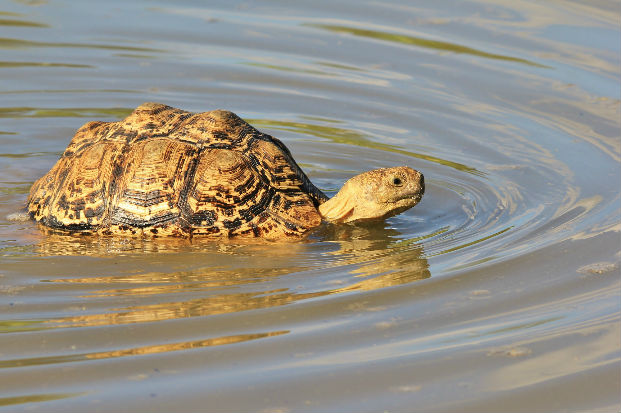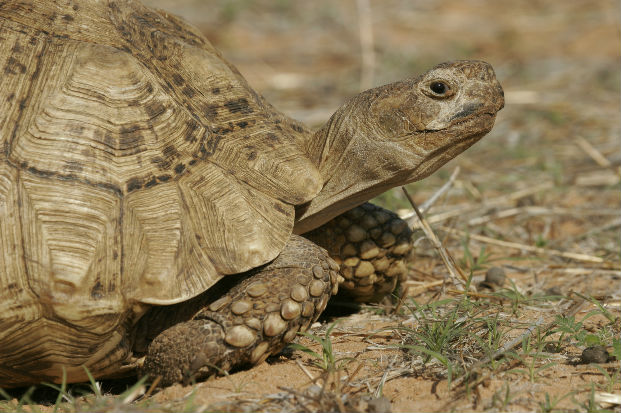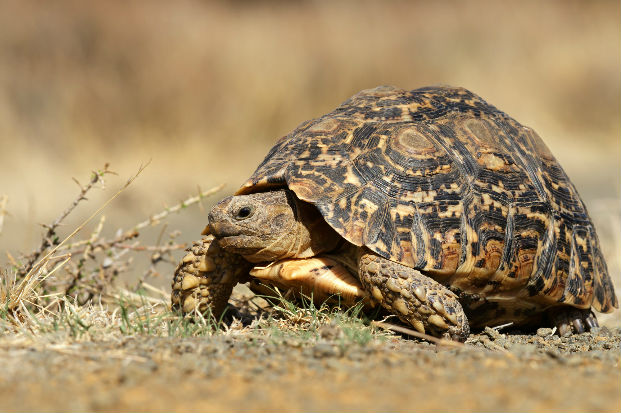Fossil records show that the tortoise dates back 210 million years to the early Triassic period. This makes them the oldest form of living reptile. The majority of land tortoises belong to the Testudinidae family. The main defining characteristic is the high carapace (upper shell).
Southern Africa has a highest diversity of tortoises than anywhere else in the world. In all there are 17 species and subspecies. The largest for the sub-region being the leopard tortoise and the smallest, the speckled padloper.
Can a tortoise swim?
The only tortoise that can swim is the African leopard tortoise. They swim slowly but are strong enough to cross rivers. The shape of their shell above the neck allows them to raise their head out of the water. They can also stay submerged for up to ten minutes.
Vote for the fact you find most fascinating
After laying her eggs in a hole a tortoise will fill it with soil and then use her feet to stamp the substrate firmly into place. On occasions she will camouflage this nest with leaves and grass.
Hatchlings are able to dig their way out of the ground because the egg residue has moistened the soil.
Tortoises will chew on bones and eat hyena scat for their calcium content. This is required for shell development and egg formation.
A day after laying her eggs a female tortoise can be ready to mate again.
Fossil records show that the tortoise dates back 210 million years to the early Triassic period. This makes them the oldest form of living reptile.
The sex in most species of tortoise is determined by the temperature at which the eggs are incubated at. Females are produced at temperatures between 31 and 34 degrees centigrade and males at the lower temperature of 26 to 30 degrees.
The bottom shell (plastron) of the male tortoise is curved. This is so he can position himself closer to the female when he mounts her. Females simply have a flat plastron.
Female tortoises will dig a hole in which to lay their eggs. If the soil is too hard she will draw water up from a special sac called the bursa and urinate to soften the soil.





